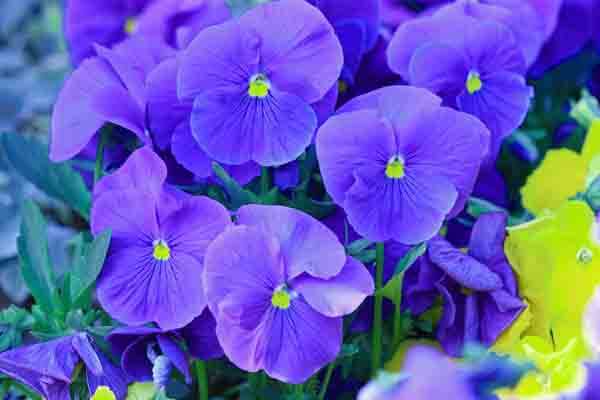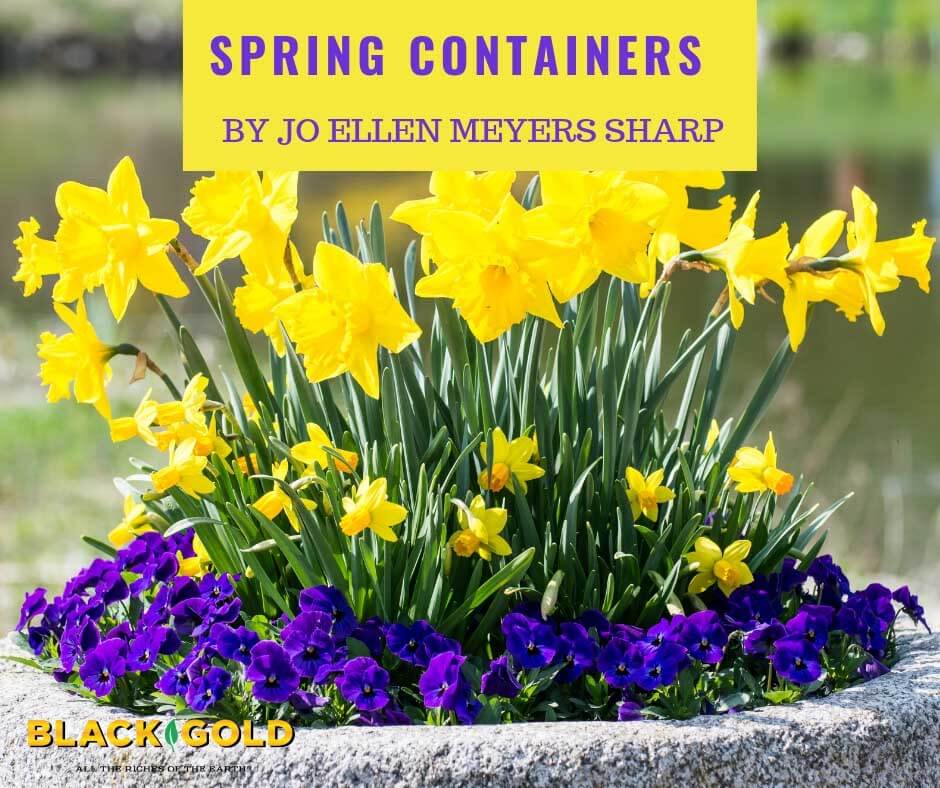
There’s something magical about a pot of spring flowers on the front step, porch, patio, or balcony. The colors, the fragrance, and just the act of getting our hands in the soil nurtures us gardeners as we reconnect with nature and start the new growing season.
Spring Container Plants
It used to be that pansies and violas were the only annuals available for spring pots, but today the choices are nearly endless. The options for cool-season annuals have exploded beyond pansies, with colorful bloomers like snapdragon (Antirrhinum majus), nemesia (Nemesia hybrids), stocks (Matthiola incana), and bedding pinks (Dianthus hybrids) to join the seasonal selections. Spring-ready perennial, shrubs, trees, and bulbs of various types are now available, to include primroses (Primula hybrids), lungwort (Pulmonaria spp.) miniature roses, and ranunculus (Ranunculus hybrids) as well as forced daffodils, tulips, crocus, grape hyacinths, and hyacinths. Look for these plants at independent garden centers, big box stores, nurseries, and even the local grocery store.
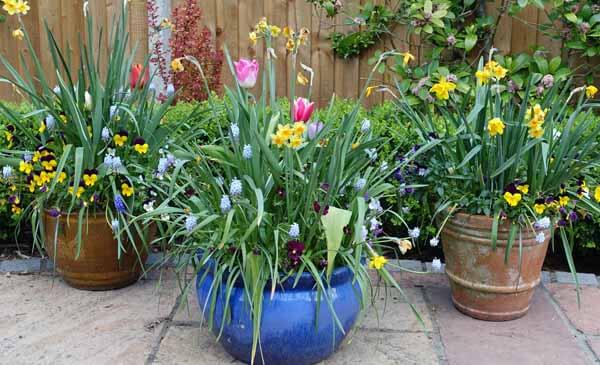
Even with so many new options available, I cannot resist filling my spring pots with tried-and-true pansies (Viola x wittrockiana) and violas (Viola cornuta hybrids). There are differences between the two, even though they are both related. Pansy flowers are larger, about the size of a 50-cent coin, while viola flowers are smaller, more the size of a quarter, and more numerous. Pansy blooms feature that familiar blotched face with whisker-like markings; viola flowers have similar markings. Each is fragrant. Pansies look and bloom best when their spent flowers are removed, a practice called deadheading. Violas do not need to be deadheaded and continue to bloom well into summer for longer than pansies.
Pansies and violas look great in just about any mixed container. This year, I mixed mine with forced daffodils and hyacinths, stocks, ranunculus, and cut pussywillow branches. Before compiling my containers, I selected and prepared my containers and mix for good looks and performance.
Spring Container Preparation
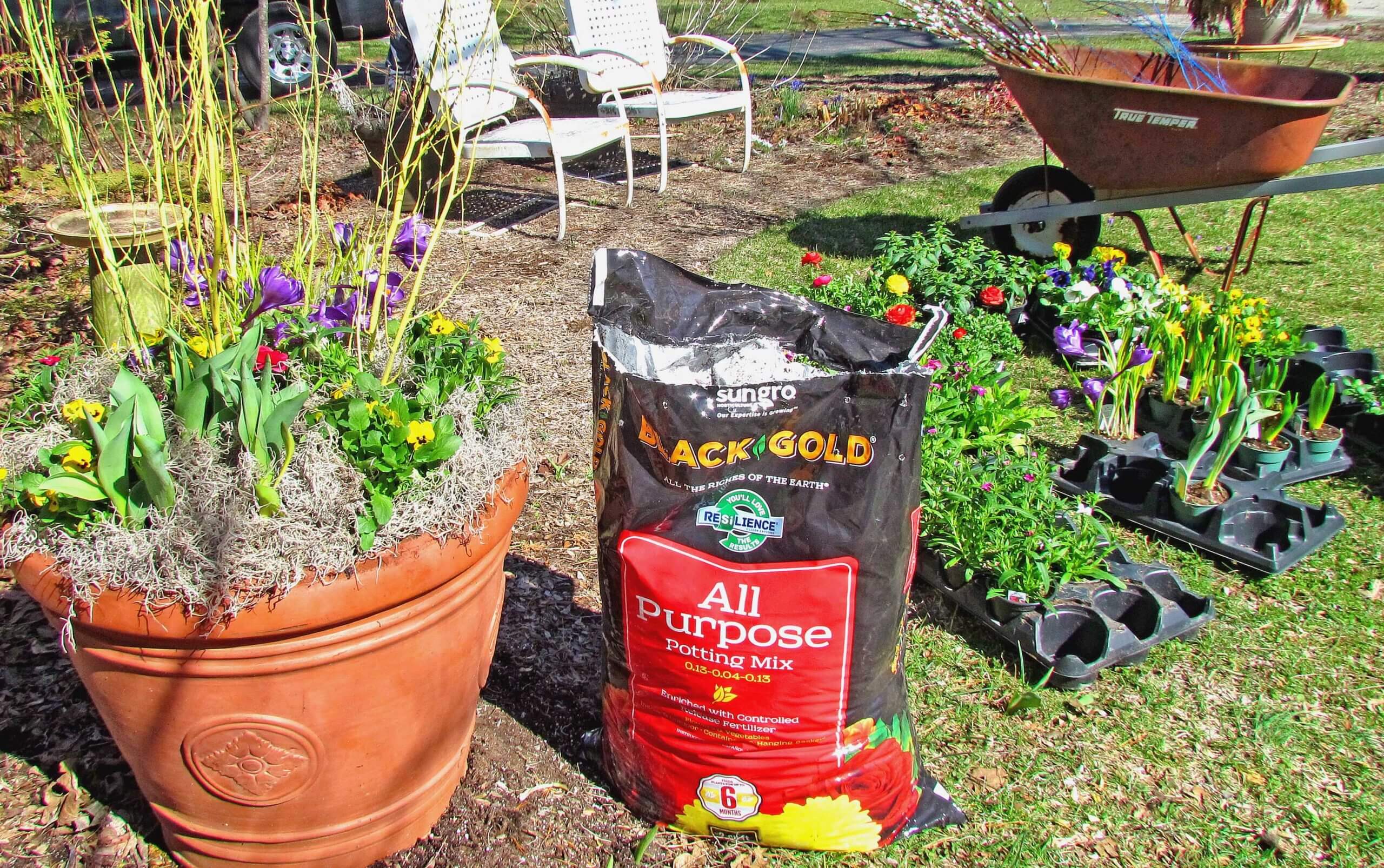
For a spring planting, use any large container with good drainage that’s made of a material able to withstand spring’s temperature swings. Use an outdoor container, one you stowed away for the season or bought new. If the soil is frozen in your outdoor containers, move them to a heated space for a couple of days to allow them to thaw.
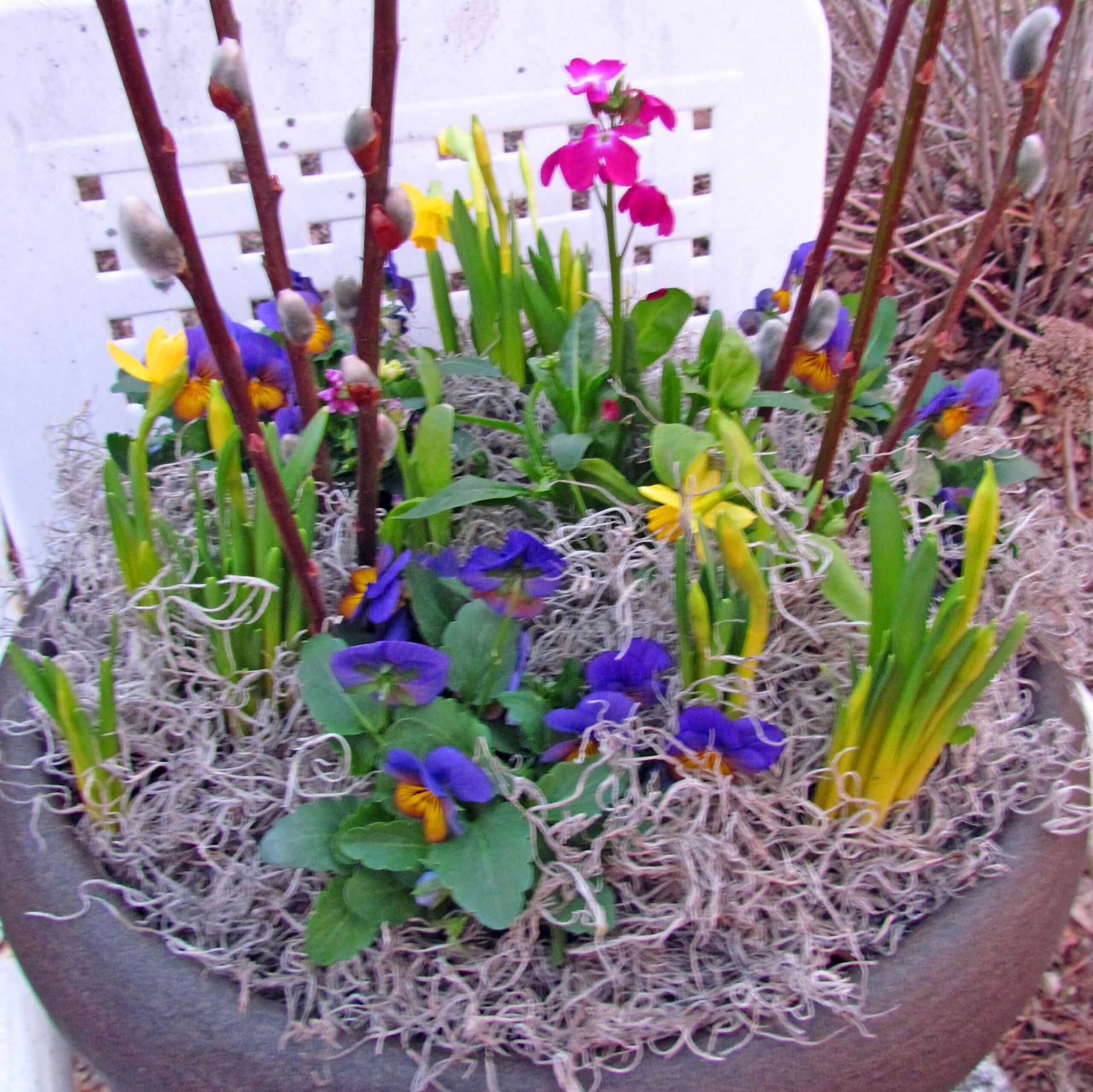
Pots already filled with mix should have the top third removed and replaced with fresh, high-quality mix, such as Black Gold All Purpose Potting Mix or Black Gold® Cocoblend Potting Mix, which are formulated for container gardening. If starting with empty pots, fill them to the top, leaving several inches of top space for planting and watering.
Black Gold potting mixes are lightweight, friable, and specially blended to promote good drainage and root development. This year I used Black Gold All Purpose Potting Mix, which has the benefit of added fertilizer to feed plants for up to 6 months. Always choose good potting mix for containers rather than soil from the garden, which is dense, heavy, and may have insects or diseases that will damage plants in a container.
Then it’s time to choose your flowers. I pick plants with complementary bloom times and color suites, and I often nest moss around my spring plantings to make them look prettier.
Spring Plant Selection & Planting Tips
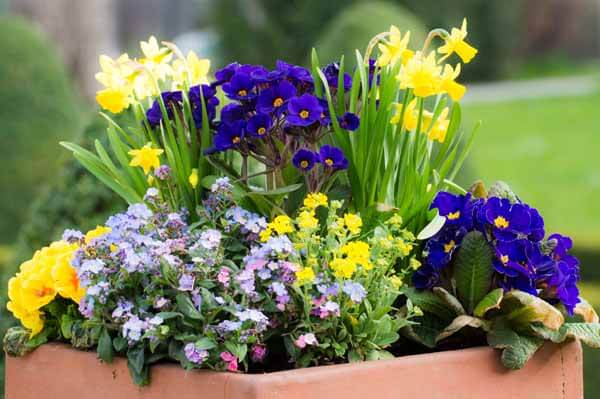
Choosing the best flowers at the garden center takes some know-how, as does planting for full effect. Here are eight smart tips I rely upon when preparing my spring container plantings:
- When shopping for forced bulbs or spring flowers, select plants with flower buds that are still tight and just barely showing color. The tighter the buds, the longer they will flower.
- If buying pansies, violas or snapdragons in 4- or 6-cell packs, plant two or three in one hole rather than individually. This ensures a nice mass of flowers and fuller look right away.
- For an even fuller look, buy spring annuals in 4- or 6-inch pots. Each pot will have one large plant or three or four smaller ones. Plant each as one plant.
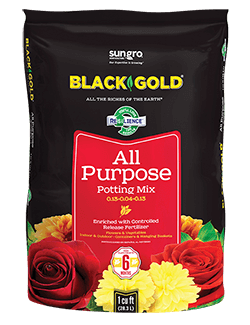 Dianthus, stocks, and ranunculus tend to be slightly larger plants sold in larger cells. Cluster a couple together for a greater mass, if desired.
Dianthus, stocks, and ranunculus tend to be slightly larger plants sold in larger cells. Cluster a couple together for a greater mass, if desired.- Don’t worry too much about plant tags that say “full sun”, if your landscape is shady. Early in the season, most trees and shrubs have not leafed out, so there’s usually enough light for contained plantings.
- Pick up birch branches in your yard or buy some at a garden center. Spray paint them spring colors, or a hue similar to the trim on your home, and add them to accent in your pot.
- Buy (or cut your own) pussy willow branches to add height and texture in your pots. These are usually available seasonally at garden centers or florist’s shops. These will remain attractive until the buds have broken and dried out. (Sometimes the branches even root in the pot!)
- Choose lightweight bags of potting mix with no bag tears or damage. An earlier manufacture date means fresher mix!
